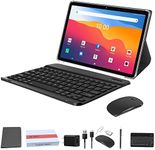Buying Guide for the Best Tablets
Choosing the right tablet can make a big difference in your daily life, whether you want it for work, school, entertainment, or just browsing. Before buying, it's important to think about what you'll use the tablet for and how often you'll carry it around. Understanding the main features of a tablet will help you decide which one meets your needs and fits your lifestyle best.Display SizeDisplay size refers to how big the tablet screen is, measured diagonally in inches. This is important because it affects how portable the tablet is and how comfortable it is for activities like watching videos, reading, or drawing. Smaller tablets (around 7-8 inches) are lightweight and easy to carry, great for reading and basic tasks. Medium sizes (9-11 inches) offer a balance, making them good for browsing, videos, and even some productivity. Larger displays (12 inches and above) are preferred for multitasking, drawing, and laptop-like use, but they are heavier and less portable. If you need a tablet for simple tasks and portability is key, go for a smaller size. If you want a replacement for a laptop or plan to do creative work, a bigger display may suit you better.
Operating SystemThe operating system determines how you interact with the tablet and what apps you can use. The most common ones are iOS/iPadOS, Android, and Windows. iOS/iPadOS is known for its smooth performance and long software support, while Android offers more customization and a wide variety of models. Windows tablets, on the other hand, are more like mini-laptops and run desktop programs. If you already use a particular ecosystem, like an iPhone or Android phone, consider choosing a tablet with the same system for easier syncing and familiarity. For productivity and compatibility with desktop apps, Windows tablets could be a better fit.
Performance (Processor and RAM)Performance relates to how fast and smooth your tablet feels, which mainly depends on its processor (CPU) and memory (RAM). A faster processor and more RAM mean the tablet can handle more demanding apps, multitask better, and stay responsive over time. Basic tablets are fine for reading, browsing, and watching videos. Mid-range models are better for light gaming and moderate multitasking. High-performance tablets are ideal for heavy gaming, video editing, drawing, and running many apps at once. Think about the types of tasks you'll do—if they are simple and light, you don't need top specs; if you want to push your tablet to do more, choose higher performance.
Storage CapacityStorage determines how much you can keep on your tablet, like apps, photos, and videos. Tablets usually come in different storage options, ranging from as little as 16GB to over 256GB or more. If you plan to store a lot of media, games, or download large apps, go for more storage. Also, check if the tablet supports a memory card, which can let you expand storage later. For basic use like web browsing and streaming, less storage is fine, but for heavy users who want everything on the device, higher capacity is better.
Battery LifeBattery life is how long your tablet can run on a full charge. This matters if you need your tablet to last all day without plugging in. Tablets can last anywhere from about 6 to over 12 hours, depending on the workload. If you travel a lot, use it at school, or want to watch movies on the go, a longer battery life will be important. Look not just at the battery size (measured in mAh) but also at real-world reviews or claims about how long the tablet lasts based on activities similar to yours.
Connectivity (Wi-Fi/Cellular)Connectivity means how your tablet connects to the internet and other devices. Almost all tablets have Wi-Fi for connecting at home or public hotspots, but some also have cellular capability, allowing you to use mobile data when you're away from Wi-Fi. If you'll mostly use your tablet at home or places with Wi-Fi, the regular model is enough. If you want full freedom to connect anywhere or travel often, a tablet with cellular is worth considering.
Camera QualityWhile not as important as on smartphones, tablets have front and rear cameras for video calls, scanning documents, or taking photos. Camera quality is measured in megapixels (MP), but also pay attention to features like autofocus or low-light performance if you know you'll use the camera a lot. If you only use the camera for video calls or occasional snapshots, a basic camera is fine. For more serious photography or clear video meetings, look for a tablet with better camera specs.
Stylus and Keyboard SupportSome tablets work with styluses (digital pens) and/or detachable keyboards, which add to their versatility. This is especially useful if you plan to take notes, draw, or type often on your tablet. Not all tablets include a stylus or keyboard by default, so check if they are compatible and how easy they are to add. If creativity or productivity is important for you, make sure your tablet supports these accessories.
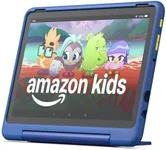


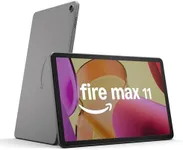
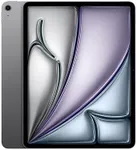
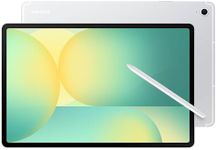
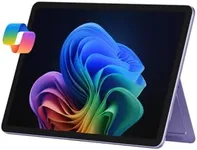
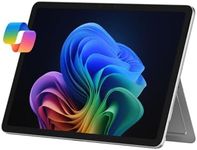
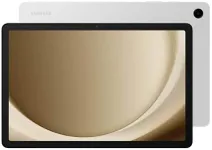

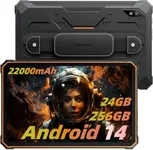


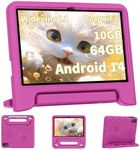
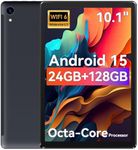
![AGM PAD P1 10.36 inch Rugged Tablet, Android 13 Tablet, Waterproof/Drop-Proof/Dustproof, MTK G99 Chipset, 2K Display FHD+ IPS, Dual Box Stereo Speakers, 7000mAh, 8+256GB[Expandable to 2TB], GPS, WiFi](https://images-proxy.bestreviews.guide/Y0G9-w0PH-K3wvamZ4CJhN8dZHc=/0x150/https://m.media-amazon.com/images/I/41TdGaVY3gL._AC_CX679_.jpg)

